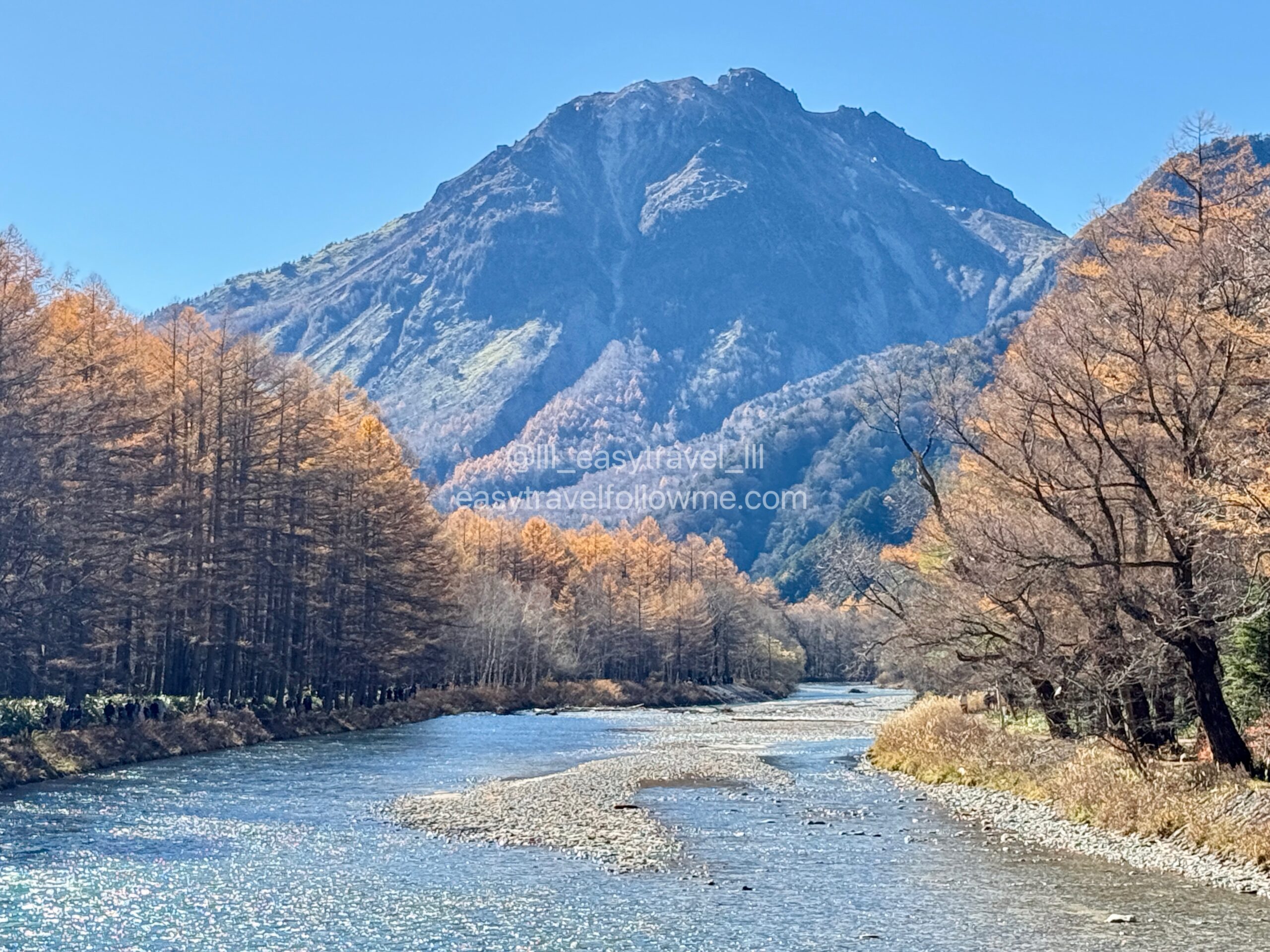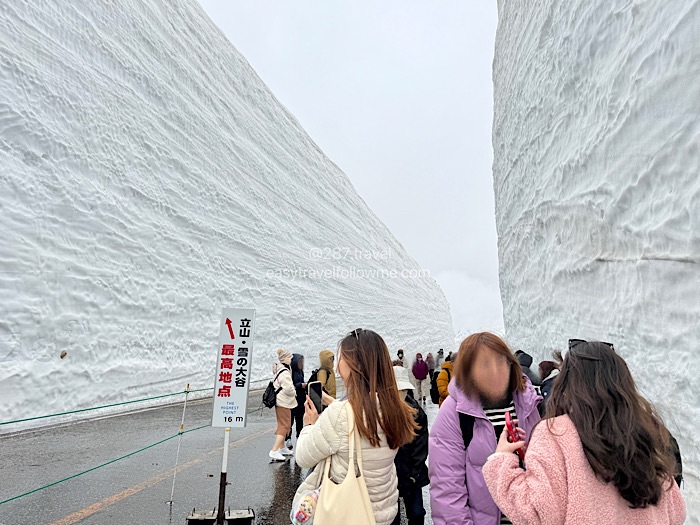With the increasing popularity of hiking and nature exploration, Japan’s hidden gem “Kamikochi,” located in Nagano Prefecture, has become a must-visit destination for many travelers, including myself, Tsubaki. However, since Kamikochi is a protected national park, there are strict transportation regulations, such as restricted private vehicle access and seasonal road closures during winter. Without proper research beforehand, you may encounter unexpected issues upon arrival. To help ensure a smooth journey, I will share essential information, travel tips, and my personal experience of self-driving to Kamikochi!
Switch content language:繁體中文|简体中文|日本語
Can You Drive to Kamikochi?

Kamikochi is part of a national park and has strict traffic regulations prohibiting private vehicles from entering the protected area. Visitors can only access Kamikochi via shuttle buses or designated taxis. There is a security gate at the entrance where staff monitor all vehicles passing through.
In summary, while you can drive to Kamikochi, you must park your car at a designated parking area before entering the restricted zone and take a shuttle bus to Kamikochi. Although this might seem inconvenient, the shuttle bus system is highly efficient and well-organized. Below, I’ll introduce the available parking areas, shuttle bus routes, and costs.
Restricted Driving Zone to Kamikochi

The main restricted road leading to Kamikochi is the “Naka-no-yu (中の湯) – Kamikochi” section, where private vehicles are prohibited. At the Naka-no-yu Gate, security personnel check vehicles throughout the year, except during the winter closure period.
Since most parking areas near Naka-no-yu Gate are reserved for hotel guests, you must park at designated parking areas with shuttle bus services to transfer to Kamikochi by bus or taxi.
There are different parking areas depending on whether you are coming from Matsumoto or Takayama. Let’s explore these options below.
Important Notice❗️
From November 16 to mid-April, the "Naka-no-yu - Kamikochi" section is closed for winter. During this time, all accommodations and restaurants in the Kamikochi area are also closed. If you plan to visit during this period, ensure you check winter hiking regulations and arrange a professional guide.
Shuttle Parking Areas for Kamikochi Access

For visitors coming from Matsumoto, the most convenient shuttle parking area is Sawando 3rd Parking Lot (沢渡第三駐車場).
For visitors coming from Takayama, the best parking option is Hirayu Akandana Parking Lot (平湯 あかんだな駐車場).
From these parking areas, you can take a shuttle bus or designated taxi to Kamikochi, which takes approximately 30-40 minutes.
✔️ Sawando 3rd Parking Lot (沢渡第三駐車場)
Address: 4161-2 Azumi, Matsumoto, Nagano 390-1520 (Google Maps)
Google Maps Code: 5M74+MJ Matsumoto, Nagano
Operating Hours: 24 hours (Closed during winter: 4/17–11/15)
Parking Fee: 700 JPY/day
Sawando 3rd Parking Lot Google Maps
✔️ Hirayu Akandana Parking Lot (平湯 あかんだな駐車場)
Address: Okuhida Onsengo Hirayu, Takayama, Gifu 506-1433 (Google Maps)
Operating Hours: Entrance 3:30–19:00 | Exit: 24 hours (Closed during winter: 4/17–11/15)
Parking Fee: 600 JPY/day
Hirayu Akandana Parking Lot Google Maps
About Sawando Parking Lot
There are four Sawando parking areas along the route from Matsumoto:
- Ichippuku-daira Parking Lot (いっぷく平駐車場)
- Ashiyu Park Parking Lot (足湯公園駐車場)
- Kasumi-sawa Parking Lot (かすみ沢駐車場)
- Iwami-daira Parking Lot (石見平駐車場)
The 3rd parking lot (Sawando Dai-San) is the most convenient since it has a shuttle bus stop. If it is full, prioritize parking in this order: 1st, 2nd, then 4th.
The 2nd parking lot has a foot bath park, which is a great place to relax while waiting for your shuttle bus!
✔️ Sawando 3rd Parking Lot (沢渡第三駐車場)
Address: 4161-2 Azumi, Matsumoto, Nagano 390-1520 (Google Maps)
Google Maps Code: 5M74+MJ Matsumoto, Nagano
Operating Hours: 24 hours (Closed during winter: 4/17–11/15)
Parking Fee: 700 JPY/day
Sawando 3rd Parking Lot Google Maps

After parking at Sawando 3rd Parking Lot, follow the signs to locate the shuttle bus boarding area.

The Sawando Shuttle Bus Terminal is a spacious wooden building designed to accommodate large numbers of tourists, especially during peak seasons. Taking a deep breath, you can enjoy the rich scent of wood, giving you a sense of being surrounded by nature even before reaching Kamikochi.

A crucial point to note is that parking fees at Sawando Parking Lot must be paid via an automated payment machine at the exit. The machines have not been updated yet, so new Japanese banknotes cannot be used—only old banknotes are accepted! Additionally, 10,000 and 5,000 JPY bills are not accepted (as updating these machines would require a significant investment…).
To avoid any inconvenience, make sure to carry 1,000 JPY in old banknotes before boarding the shuttle bus. If you do not have them, you can exchange money at a small shop near the parking lot. However, if you return on the last shuttle bus and the shop is closed, you may need to call staff for assistance—or worse, you might not be able to leave the parking lot at all!
Sawando Parking Lot Exclusive Taxis

At the shuttle bus station, you can also take an exclusive taxi. There are two types available: a standard 4-passenger car and a larger 6-9 passenger vehicle. However, when I visited in early November, the larger vehicle was not in service, and only the 4-passenger taxi was available.
The fare for a 4-passenger taxi is:
- Sawando to Taisho Pond (大正池): 4,300 JPY
- Sawando to Kamikochi (上高地): 5,200 JPY
If four people share the fare, the cost per person would be 1,075 JPY and 1,300 JPY, respectively.
The fare for a 6-9 passenger taxi is:
- Sawando to Taisho Pond: 6,900 JPY
- Sawando to Kamikochi: 8,300 JPY
If six people share the fare, the cost per person would be 1,150 JPY and 1,383 JPY, respectively.
Regardless of whether you choose a small or large taxi, splitting the cost among passengers makes it cheaper than taking the shuttle bus, which costs 1,500 JPY per person one-way. Therefore, taking a taxi can be a cost-effective and convenient option!
Sawando Parking Lot Shuttle Bus

As mentioned earlier, the shuttle bus stop is conveniently located next to Sawando 3rd Parking Lot. After parking, it’s only a short walk to the Kamikochi shuttle bus station, where you can purchase your bus tickets.
Timetable

Shuttle buses from Sawando Bus Stop to Kamikochi run every hour on the hour and every 30 minutes. During peak hours, additional buses may operate every 10-20 minutes, so you can check the updated timetable posted at the station.
The official website also provides a bus timetable. While the last return bus from Kamikochi to Sawando is listed as 17:30, when I visited, the last bus actually departed at 17:00. Be sure to double-check the latest schedule to avoid missing your return trip! But if there are too many passengers for a scheduled bus, the bus company may add extra buses as needed.
Sawando Shuttle Bus Route

The shuttle bus route from Sawando Bus Stop (さわんど ) to Kamikochi (上高地 includes stops at:
Taisho Pond (大正池) - Imperial Hotel (帝国ホテル) - Final Stop: Kamikochi Bus Terminal
Passengers can disembark at any stop, but once you get off, you cannot reboard using the same ticket. Means you need to buy another one way ticket.
❗ Tip ❗
If you enjoy hiking and scenic views, I recommend getting off at Taisho Pond and trekking toward Kamikochi at a leisurely pace. Since return buses start from Kamikochi Bus Terminal, if you wait until Taisho Pond to board, you may find the bus full and need to wait for the next one.
When we visited, we arrived around noon, so we opted to get off at Kamikochi Bus Terminal, have lunch at a local eatery, and then begin our hiking journey.
Sawando Parking Lot Shuttle Bus Fares, Ticketing & Important Notes

The shuttle bus fare from Sawando Bus Stop to Kamikochi is 1,500 JPY one-way and 2,800 JPY round-trip. If you plan on returning the same day, purchasing a round-trip ticket is more cost-effective.

In addition to buying tickets at the ticket counter, you can also purchase them from automated ticket machines located nearby. These machines accept credit cards, making the process quick and convenient!

When purchasing a round-trip ticket from the machine, you will receive a single round-trip ticket instead of two separate tickets. Be sure to keep it safe and retain it for your return trip.

The boarding area for the shuttle bus is different from the ticket counter. The ticket counter side is for passengers getting off the return buses, while the boarding area is located at the rear of the shuttle bus terminal. Be careful not to mix up the locations and miss your bus!


Besides buses heading to Kamikochi, Sawando Bus Station also has services to Shirahone Onsen and Shin-Shimashima Station. The bus bound for Kamikochi departs from Bus Stop No. 1 (上高地行). After exiting the shuttle bus waiting area, you will immediately see the buses and the stop sign for Kamikochi-bound buses.
Sawando Parking Lot Tourist Information Desk

While waiting for the shuttle bus, you can check the tourist information desk for the latest weather and temperature conditions in Kamikochi.
You can also check Tenki.jp for a 10-day weather forecast in advance. However, weather conditions can change frequently—even if rain is predicted 10 days before your trip, the weather may improve as the travel date approaches. For example, when I checked 10 days before my trip, it showed rain, but as the date neared, it changed to sunny skies.

At the tourist information desk, you will also find travel guidebooks in multiple languages, including maps of Kamikochi’s hiking trails and other useful information. I highly recommend picking up a copy!
How Much Time and Money Does It Take by Self-driving to Kamikochi ?
To give you an idea of the cost of self-driving from Tokyo to Kamikochi, here’s an example from our own trip. The cost for a two-day car rental and fuel was 35,752 JPY. We opted for an SUV, which was slightly more expensive than a standard car. Additionally, the round-trip toll fee amounted to 8,510 JPY.
Parking fees along the way added up to approximately 1,000 JPY, bringing the total rental-related expenses to 45,262 JPY. Split between two people, this came to 22,631 JPY per person (of course, renting a cheaper car or traveling with more people would reduce individual costs).
Although the cost of renting a car was slightly higher than using public transportation, the main advantage of self-driving was the flexibility—it allowed us to travel at our own pace without relying on bus or train schedules and explore other areas conveniently.
If you’re unsure how to rent a car in Japan, I recommend Tabirai, Rentalcars, and Klook, all of which offer Chinese or English website support.
Tabirai Japan Rental Car
Rentalcars.com guarantees the lowest rental prices, while Tabirai partners with more rental companies. Klook is convenient for booking. Sometimes, if Rentalcars has no available cars, you may find options on Tabirai or Klook. Comparing different platforms can help you find the best deal!
As for travel time, we departed Tokyo at 6:30 AM on Saturday and, with stops at rest areas and some light traffic, arrived at Kamikochi at around 10:30 AM, totaling a four-hour drive. For the return trip, we left Matsumoto at 6:00 PM on Sunday, drove for an hour to Kofu for dinner, and then continued driving back to Tokyo at 9:00 PM, arriving at around 10:30 PM. The return journey took approximately 2.5 hours, slightly less than the outbound trip.
You can also opt for a guided tour
If driving seems too tiring or navigating multiple transfers by public transport sounds troublesome, you can also join guided tours or multi-day bus tours that include accommodations. Below are some recommended options:
- Kamikochi One-Day Round-Trip Bus Tour (Departing from Nagoya)
- Shirakawa-go & Kamikochi 2-Day Tour (Includes Accommodation & Meals, Departing from Tokyo)
- Kurobe-Tateyama, Kamikochi, Shirakawa-go & Takayama 3-Day Tour (Departing from Nagoya)
- Other Kamikochi Tours on Kkday
- Other Kamikochi Tours on Klook
This guide covers everything you need to know about ” Self-driving to Kamikochi “, including transportation regulations, parking areas, shuttle services, costs, and personal experiences. Hope this helps in planning your trip!
Notice for this article:
The above travelogue is based entirely on my personal experiences and subjective opinions from actual visits. All thoughts and impressions are my genuine and honest views. Please use your own discretion when referencing this content.
I frequently share travel updates on Instagram. Since I only recently started, I’d really appreciate it if you could follow and support me 🥰 (@287.travel )
**********************************
❗️All articles and most images on this website are original content created by us after extensive research and personal visits.
Every article is protected under DMCA. Unauthorized copying or redistribution is strictly prohibited. ❗️
If you found this article helpful, please share it with others or repost it ♥
You can also buy me a coffee to encourage me—I’d love to keep sharing more travel insights with you! ☕😊 I sincerely appreciate your support!
~~ You can also support me for free by clapping a few times on LIKE Citizens below! 😉 ~~
※Some free images on this site are downloaded from PhotoAC. For reference, please check the link below: 無料写真素材なら【写真AC】.
**********************************





